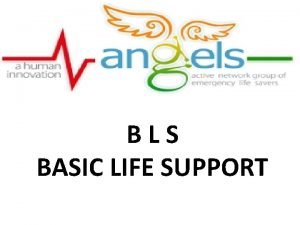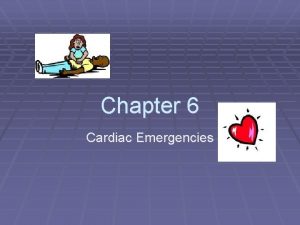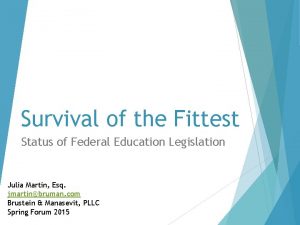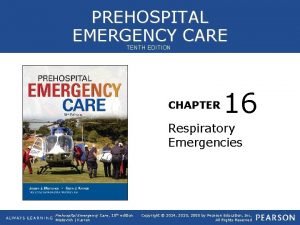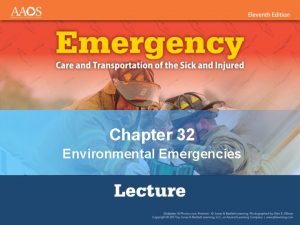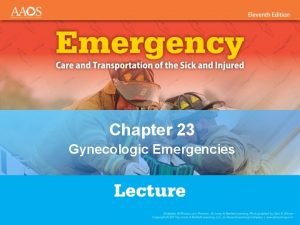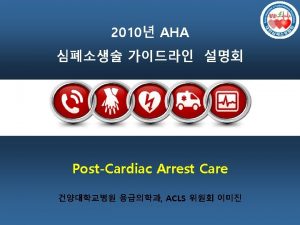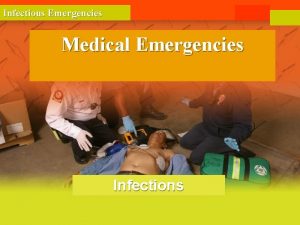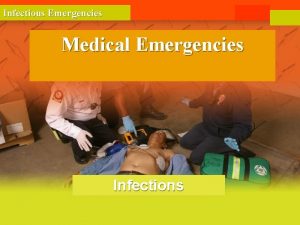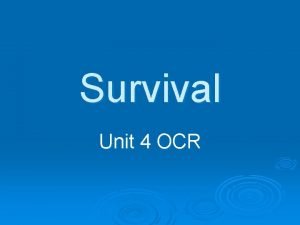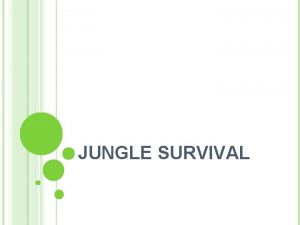CHAPTER 6 Cardiac Emergencies Cardiac Chain of Survival









- Slides: 9

CHAPTER 6 Cardiac Emergencies

Cardiac Chain of Survival Cardiopulmonary resuscitation (CPR) is a combination of chest compressions and rescue breathing. Cardiac Chain of Survival: Early recognition and early access Early CPR Early defibrillation Early advanced medical care

Recognizing Signals of a Heart Attack Pain is described as— Uncomfortable pressure. Squeezing. Crushing. Tightness. Aching. Constricting. Heavy sensation in the chest. Trouble breathing. Paleness. Ashen skin or bluish skin, particularly around the face. Skin may also be moist.

Recognizing Signals of a Heart Attack Any severe chest pain lasting longer than 3 to 5 min. or any other signals should receive medical care immediately.

Recognizing Signals of a Heart Attack As with men, women’s most common heart attack signal is chest pain or discomfort. Women are somewhat more likely to experience other warning signals: Shortness of breath. Nausea or vomiting. Back or jaw pain.

Care for a Heart Attack Follow CHECK—CALL—CARE. Call 9 -1 -1 Have the victim stop all physical activity. Loosen any restrictive clothing and have the victim rest. Monitor the victim closely. Be prepared to perform CPR or use an AED. Talk to bystanders to find out what happened. Do not try to drive the victim to the hospital yourself.

Angina Pectoris Angina pectoris develops when the heart needs more oxygen than it gets. When the coronary arteries are narrow and the heart needs more oxygen, heart muscle tissues may not get enough oxygen. Pain associated with angina seldom lasts longer than 3 to 5 minutes.

Cardiac Arrest Cardiac arrest: heart stops beating or beats too ineffectively to generate a pulse and blood cannot be circulated to the brain and other vital organs. A victim in cardiac arrest is unconscious and shows no signs of life.

Cardiac Arrest Signs of life include— Normal breathing. Movement. A pulse (for children and infants only). The victim’s skin may be pale, ashen or bluish. The face may also be moist from perspiration. Sometimes a victim of cardiac arrest doesn’t show any warning signals. This is called sudden death
 In hospital cardiac arrest chain of survival
In hospital cardiac arrest chain of survival Lesson 6: cardiac emergencies and using an aed
Lesson 6: cardiac emergencies and using an aed State of survival survival of the fittest tweak
State of survival survival of the fittest tweak State of survival survival of the fittest stages
State of survival survival of the fittest stages Grazing food chain diagram
Grazing food chain diagram Chapter 16 respiratory emergencies
Chapter 16 respiratory emergencies Chapter 32 environmental emergencies
Chapter 32 environmental emergencies Chapter 23 gynecologic emergencies
Chapter 23 gynecologic emergencies A behavioral crisis is most accurately defined as
A behavioral crisis is most accurately defined as Endocrine and hematologic emergencies
Endocrine and hematologic emergencies
